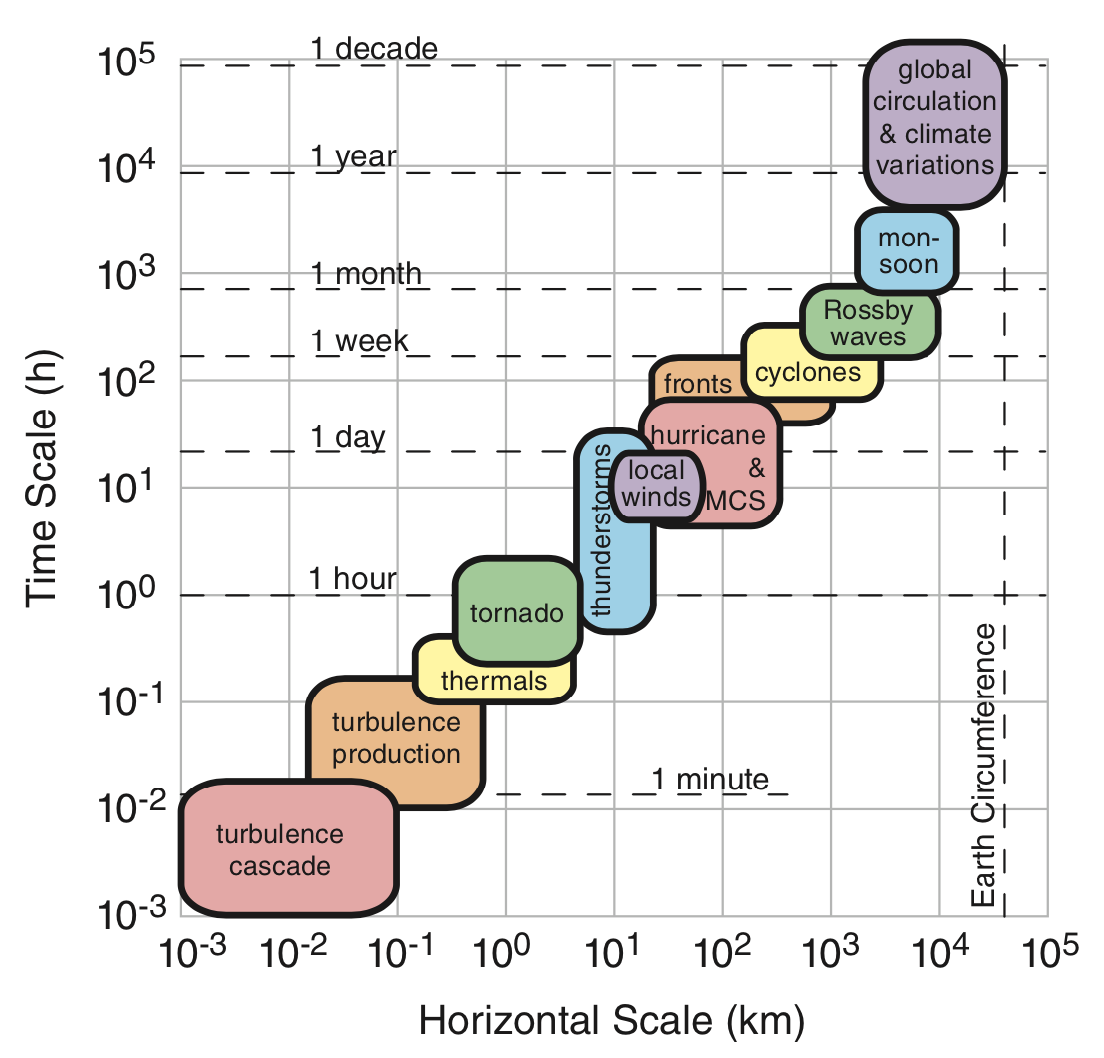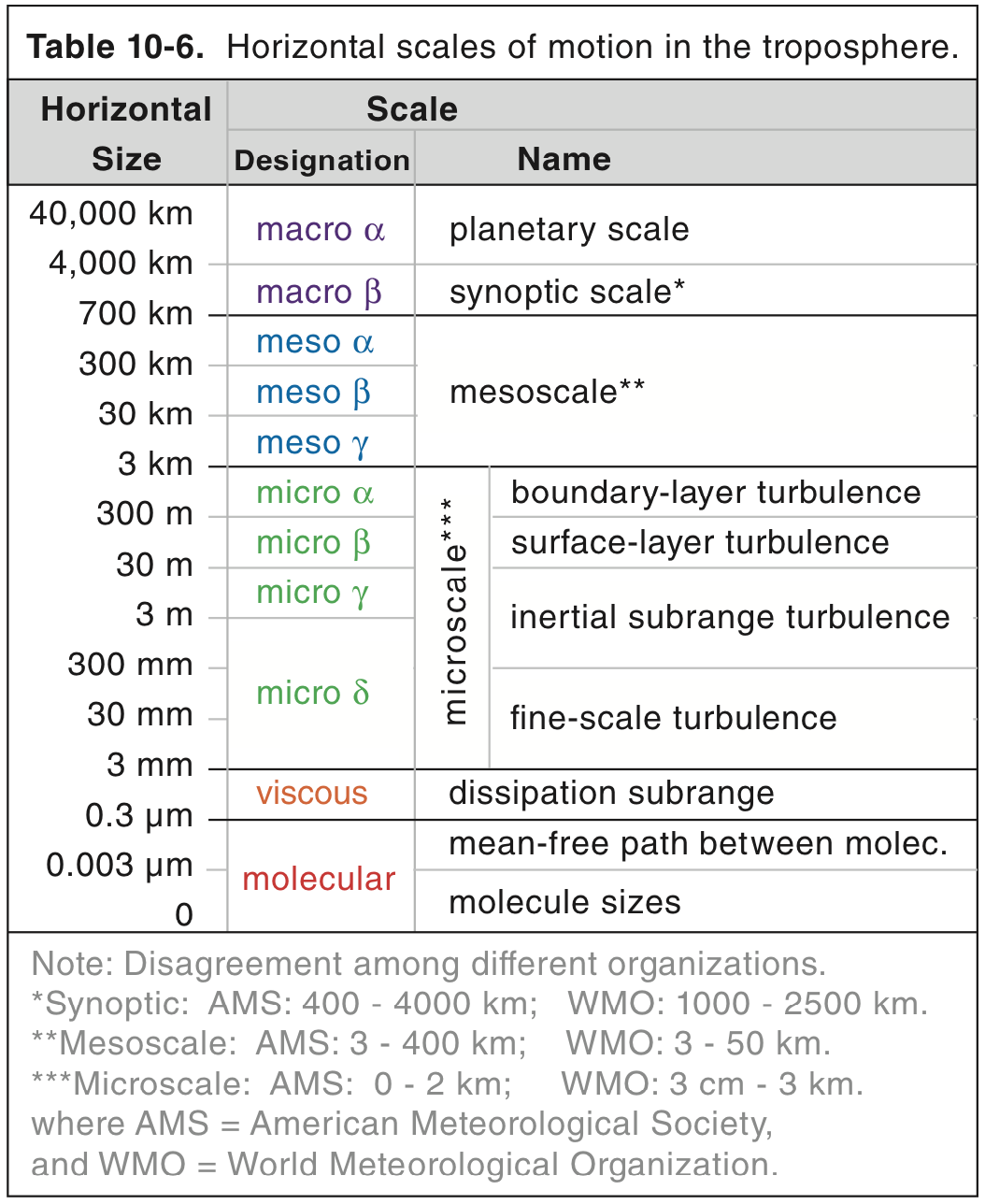| Module |
Learning Goals | |
| A |
12. Synthesis By the end of this module, you will be able to: |
|
| X |
a |
Identify the time and spatial
scales of various weather phenomena. (see figures below) |
| X |
b |
Make connections
between weather characteristics that are common to flying, snow-sports,
& sailing. |
| X |
c |
Synthesize a coherent picture of the weather. |
| A |
13. ePortfolio (optional) By the end of this module, you will have created: |
|
| X |
a |
Your own weather webpage on
Canvas with links and info that are relevant to your own sports,
activities or interests. Notes: • You will be able to continue to access and use your ePortfolio after the course ends. • Here is a sample of a simple weather ePortfolio. https://canvas.ubc.ca/eportfolios/372/ ) • If you go to Canvas / Modules and look in the ePortfolios Module (just after the Flying-weather Midterm module), then select the Instructions page, you can find a link to some of our favorite ePortfolios from previous terms. Those students gave us their permission to allow you to see their names and ePortfolios. |
Surprisingly, small horizontal-size phenomena in the atmosphere are often short lived. Larger-size phonemona often last longer. The net result is that most of our weather phenomena fall along a diagonal line in the first figure below. Every weather phenomenon that we discussed in the flying, snow-sports, and sailing weather themes can be found at some location on the first figure below.
Even if you don't see the name of a phenomenon in the first figure below, often you know either the horizontal or temporal scale of the phemonenon from the learning-goal content under the flying, snow-sports, and sailing weather themes. This knowledge would allow you to figure out where it should go, so you could create a new box for it on that first figure.

